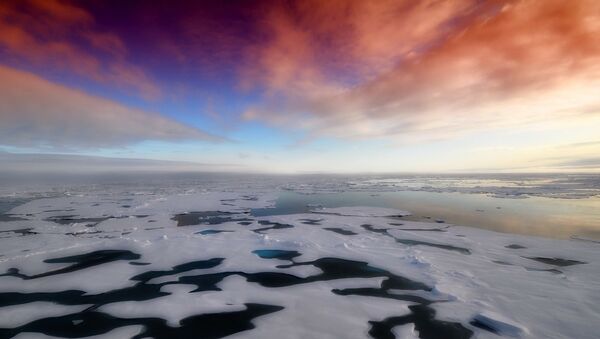Vast ice sheets of Antarctica are still discharging radioactive chlorine in the wake of nuclear weapons tests carried out in the 1950s, a new study published in the Journal of Geophysical Research – Atmospheres has shown.
Mélanie Baroni, a geoscientist at the European Centre for Research and Teaching in Geosciences and the Environment in Aix-en-Provence, France, and her colleagues examined chlorine emissions in different parts of Antarctica in areas where annual snowfall is high versus areas where snowfall is low.
Scientists commonly use radioactive isotopes to determine the ages of ice by drilling into ice sheets as part of research into the mysteries of Earth's past climate.
Some chlorine-36 forms naturally, but it can also be produced during nuclear explosions when neutrons react with chlorine in seawater.
The experts discovered that high levels of chlorine-36 are still present near the surface of the ice around the location with little snowfall, the Russian Vostok research station.

Since naturally produced chlorine-36 is stored permanently in layers of Antarctica's snow, the results show the site still has manmade chlorine produced by bomb tests in the 1950s and in the 1960s.
"There is no more nuclear chlorine-36 in the global atmosphere. That is… why we should observe natural chlorine-36 levels everywhere," said Baroni, co-author of the new study.
The US conducted nuclear testing in the Pacific Proving Grounds between 1946 and 1962, causing reactions that generated high concentrations of isotopes like chlorine-36.
These reached the stratosphere and traveled around the globe.
As some of the gas reached Antarctica, it was deposited on Antarctica's ice and has remained ever since.

While other isotopes produced by nuclear bomb testing mostly returned to pre-bomb levels in recent years, scientists expected chlorine-36 to have done so, too.
The consistently higher levels at the Vostok snowpack suggest it is still releasing radioactive chlorine from the 1950s and 1960s marine nuclear bomb tests.
This has been explained by the mobility of chlorine-36 in its gaseous form at low snow accumulation sites located on the High Antarctic Plateau, such as Vostok.
Experts added the released amount is too small to have an effect on the environment.
Scientists are currently planning to drill for a 1.5 million-year-old ice core in the Antarctic, and understanding how Vostok releases manmade chlorine-36 could help use the isotope to glean data from the ancient ice core, Baroni said.




